Suburban coyotes are my target for tonight. It’s 2 a.m. I’m cruising up and down streets, scanning for movement. I’d like to tell you I have the trained eye of a coyote hunter and that I can see things you cannot. I could claim I know where to look for coyotes and, more importantly, what habitat they would live in. It would all be accurate but irrelevant. Your neighborhood has everything a coyote needs to thrive.
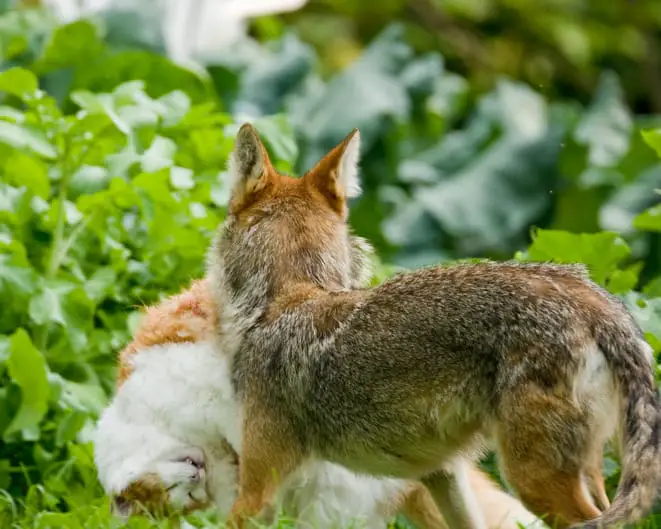
Before I have put a mile and a half on my odometer, I spot three coyotes. They cross a road ahead of me that is still wet from a passing shower. None of them even glance at my approaching vehicle or react to being spotlighted in my headlights.
Slowing down, I continue to watch them. Trotting in a straight line, the coyotes pass through the parking lot of Dollar General, jump a four-foot fence, and spread out into a backyard. Before 5 a.m., I will see more coyotes in one night in this bedroom community than in a month of hunting them in the wild.
What can you do to lessen the chance of having an unpleasant interaction with one of these coyotes? Well, read on.
And just so I can leave out all the history, biology, and other classic filler, check out my General Information on Coyotes article if you need more details.
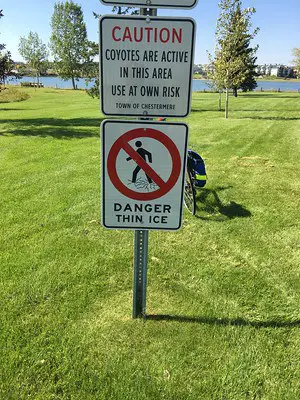
Why are there so many suburban coyotes?
That’s an easy question; the suburbs have everything a coyote needs to live comfortably and breed in large numbers. The community I was patrolling through is coyote heaven. Here coyotes traveled only at night, with no daytime sightings or reports of coyote-human interactions. In less abundant areas, coyotes chase joggers, follow children to school bus stops, or openly kill pets in fenced-in yards.
A comfortable life for a coyote is all about the local habitat. If it has plenty of food and water, suitable places to make dens and raise and rear pups, and no natural predators—it’s perfect.
The suburbs have rabbits, squirrels, and mice—all basic staples of the coyote diet. There are also rich, well-tended gardens and fruit trees. These are delicious treats that are harder to find in the wild. And let’s not forget about the garbage and compost piles. Your leftovers are tastier than any roadside carrion, and your compost pile is more nutrient dense than the plants a country coyote typically fills half their belly with at each meal.
Heck, some of the friendly people even feed the local coyotes and give them funny names.
As for shelter, that rarely used shed behind your house makes for a perfect place to put a den. If that’s not suitable, there are storm drains, golf courses, and parks with zero human traffic at night to call home.
Raising pups in the suburbs is safer than in a rural area. Mom and dad don’t need to travel far to secure water and food. There are no leg hold traps, snares, or hunters pursuing them. There is traffic, but at night the flow ebbs, and the speed limit is 30 m.p.h.; a hazard easily avoided.
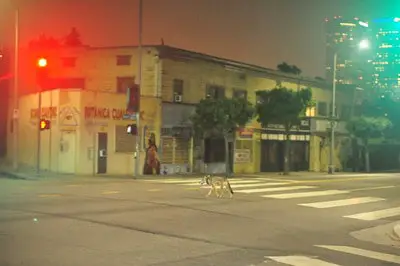
Suburban coyotes need less space than rural coyotes.
And the last piece to the ”where are all these coyotes coming from” puzzle; is a habitat so rich coyotes have tiny territories. A coyote in a rural area may need to take control of 5-15 square miles of land to secure and protect enough resources. Some suburban coyotes claim areas as small as 1/4 square mile. That means your development can support 20-60 times as many coyotes as that rustic village a few miles up into the hills around your town.
How living with humans changes a coyote.
Those Youtube videos of coyotes casually trotting past humans waiting for buses, playing in their front yards, or getting groceries out of the car—send a shiver down a country boy’s heart.
It ain’t natural. Something is seriously wrong. Four things strike me right off the bat.
- Note how close the students and the coyote get to each other.
- Both the humans and coyotes have lost their natural fear of each other.
- The coyote is out during the daytime rather than its normal activity period.
- The coyote has a name, and the students treat it like a mascot or a pet.
In ”their” real world, coyotes are cautious creatures. They possess a strong aversion to being seen, let alone getting close to people. A wild coyote flees the area upon catching the scent of a person. Coyotes are digitigrade animals, meaning they walk and stand with their toes on the ground (tiptoe) to move about silently. A wild coyote’s ears are little, constantly swiveling radar dishes, always listening for danger.
If a coyote acted this way in a rural area, it would probably be destroyed. In the country, weird daytime activity with wild animals without fear of humans means only one thing; rabies.
How can you tell if a coyote has rabies?
Grab a pen and paper and take some notes. Here are the signs a coyote may have rabies.
- It suddenly becomes aggressive and attacks you.
- It acts overly-friendly.
Seriously, looking at it, you cannot tell if a coyote has rabies. Proof of rabies is only determined in a lab. The only clue you might get? Weird behavior on the part of the coyote.
But the suburban coyote is already acting weird. Honestly, so are the folks that let a wild dog get so close. If attacked, these people will have no time to react.
Pro Tip: Never get comfortable with coyotes. Teach your kids to distrust coyotes and to report any encounter immediately. And if you’re a guy and think a coyote nipped you—see a doctor. Rabies is still a nasty way to die, but the treatment price hurts more than the shots nowadays.
According to the CDC, about 60,000 Americans are treated for rabies after suspected exposure. The fatality rate for untreated rabies in humans is nearly 100%.
If you’ve never seen rabies in humans before, I picked the worst video I could find for you.
Recent cases of coyotes with rabies in the United States.
When this article was written in 2022, many online resources and websites openly claimed that coyote attacks and coyotes with rabies were rare. Yet, a simple Google search brings news story after story detailing recent and ever-increasing attacks and confirms rabies cases in those responsible coyotes.
January 2022: A New Hampshire family is attacked by rabid coyote while backpacking.
May 2022: A Dallas, Texas two-year old was dragged from his porch and mauled—he survived but probably had to have treatment for rabies. 14 previous complaints had been made about suspicious coyote behavior prior to the attack.
June 2022: A rabid coyote bit three adults, two dogs and a police officer before being shot in Lake Accotink, Va.
July 2022: A coyote tested positive for rabies in Denville, N.J. Two seperate attacks on shoppers Swamscott, Mass., sent victims for rabies vaccine shots.
Most of these victims paid an average of $3,000 out of pocket for their treatment—after their insurance (if they had it) paid what it covered. The first shot (the rabies immune globulin) can cost over $45,000–and you don’t have much time to shop around for a better deal.
Suburban coyotes will attack people and pets.
In the wild, getting a coyote to take a bite at a human is nearly impossible. Wild coyotes have large territories (see above) and places of safety to retreat to when they encounter humans. They have backup dens and diversionary tactics to protect their pups from discovery.
Suburban coyote attacks, however, are increasing in frequency and severity. Sometimes on pets.
Sometimes, on people.
Suburban attacks are increasingly common for a variety of reasons.
- Small suburban territories force coyotes to defend core areas, often not much larger than a single housing lot. An attack is likely if your child discovers an active den dug under your disused shed.
Even with left-out pet food, garbage, and other edibles, a growing coyote population will need increasing calories. - A wild-live-loving suburban population rarely poses a threat to suburban coyotes.
- The use of suburban areas by coyotes comes in four stages.
The four stages of suburban coyote inhabitation.
Stage One: The chicken or the egg stage. Who moved into whom’s land? Did a developer pick a spot for your home inside a coyote’s existing territory? Or, did your home’s sudden appearance simply become a more attractive ecosystem for a transient coyote? Regardless of who trespassed, both parties find what they need and move in.
Stage Two: Nocturnal life. Unless you are a cop patrolling the street, a night shift worker, or an early morning jogger—you will never even realize coyotes are living in your community. With a low population count, they are well fed on things you’ll never miss or whose apparent theft is blamed on raccoons and squirrels.
Stage Three: Missing pets and Ring Camera footage. This stage usually begins with a sudden increase in Missing Cat posters and ends in local news stories with a video that ”may be upsetting to some viewers.” A few videos start popping up of coyotes leaping over fences into backyards, grabbing tiny dogs and cats, and scurrying away into the night. At this point, the coyote is identified as the suspect in all missing pet cases.
Stage Four: This is the last stage and represents the moment a suburban coyote population seems to explode. Coyotes are seen in increasing numbers during the day. Coyotes become openly aggressive and territorial around humans and pets. Often beginning during Pup rearing season, the adult coyotes require more food for their pups and actively defend their dens. By late summer and early fall, the puppies are fully grown and hunting independently.
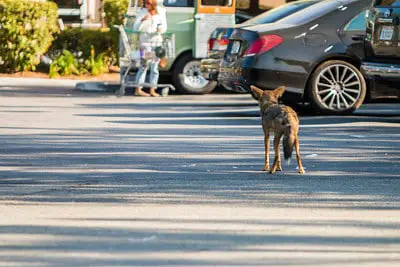
How to deal with suburban coyotes.
Dealing with suburban coyotes may seem like a lost cause, but you do a few options.
If you are in a new development, early detection and action of coyotes is critical. Probably the cheapest, most reliable, and easiest to use night vision equipment I have ever bought are these night vision binoculars.
Once you have detected a coyote, make it as uncomfortable as possible by hazing it. Make a lot of loud noise (yell, use an air horn, blow a whistle). Throw rocks or soda cans filled with pennies or bolts at it. Hit it with pepper spray or blast from your garden hose if near enough. Patrol your yard and check for dens under sheds or garages. If you find a den, report it to the authorities and begin hazing from a safe distance away. An appropriately hazed coyote will not move into your area.
Half-hearted hazing only encourages coyotes. While hazing, ensure the coyote can see you and recognize that humans are a threat. And always continue to haze until the coyote flees—continuing your approach until it retreats.
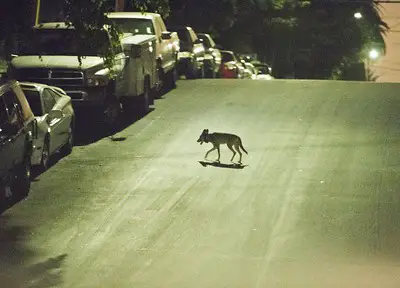
How to handle suburban coyotes who live near your home.
If suburban coyotes are already settled near your home, you still have a few actions you can take.
Never feed coyotes. Coyotes who are fed by humans quickly lose their fear of humans. You should also actively discourage your neighbors from deliberately or accidentally feeding coyotes. Don’t leave pet food out, and secure your trash cans.
Fence in your yard. Installing an 8’ high fence should keep coyotes from entering your yard and provide a safe space for your family and pets. Keep the area near your fence cleared of obstacles, or the coyote will simply use them as a step ladder to gain entry.
Report aggressive or strange-acting coyotes. If a coyote ignores your hazing attempts or becomes openly aggressive to you, report it immediately. You may have to make a few detailed complaints to get anyone to take action but do it-and encourage your neighbors to do it as well.
Keep your pets on a leash. Don’t let your cats or dogs roam around unattended. Smaller pets are nothing more than prey to an adult coyote. Larger dogs will be considered trespassers by suburban coyotes and attacked.
Carry a walking stick. The average coyote weighs about 30-35 pounds. If you stand your ground and do not run from it, it is highly likely to back down. If it attacks, a few good kicks to the chest or ribs can be fatal to it. A solid blow from a walking stick to the top of a coyote’s skull often knocks it out for several minutes or kills it outright. Regardless of the outcome, seek medical attention immediately after the attack is over.
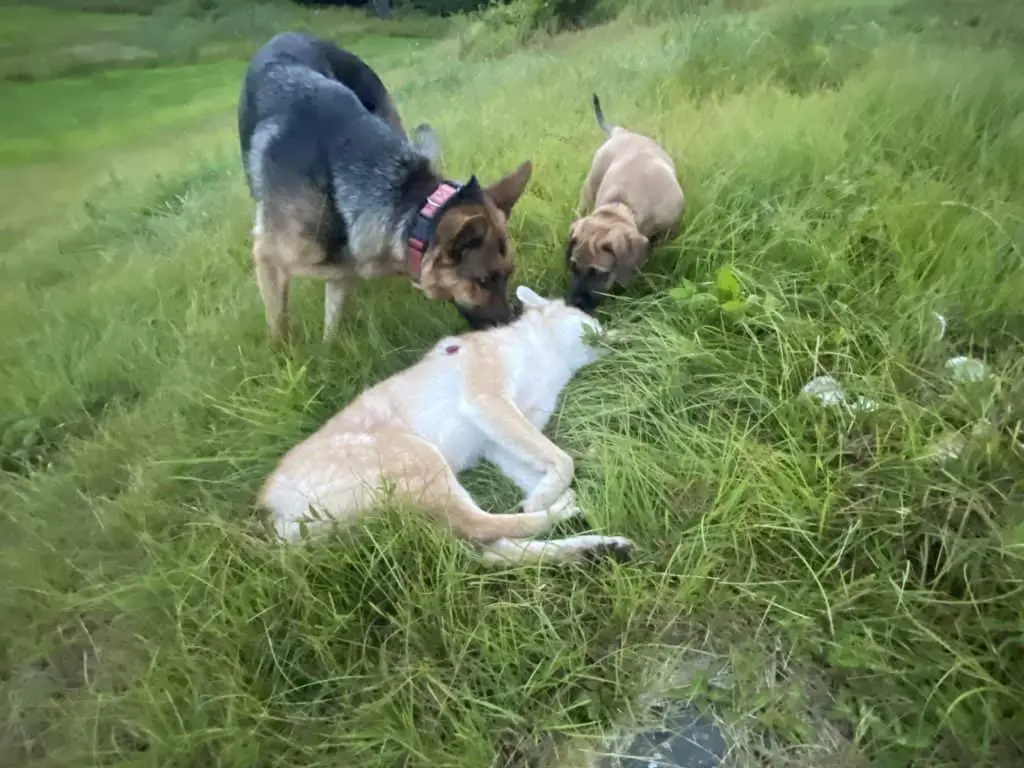
Turn a suburban coyote into a rural coyote.
Dealing with suburban coyotes is all about making them want to find a new home in the country.
Reinforce their natural fear of humans by hazing them constantly. Be a terrible neighbor and make a lot of noise. Deprive them of easy meals. Call the cops on them every chance you get.
With a bit of persistence and the support of your neighbors, you should have your local suburban coyote calling a real estate agent within a few weeks.

